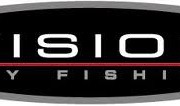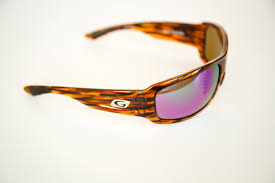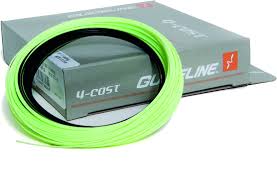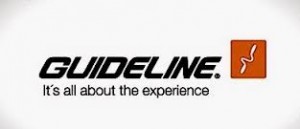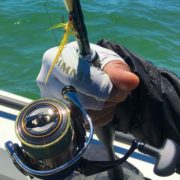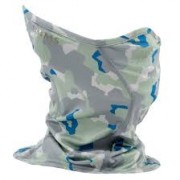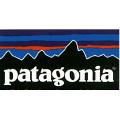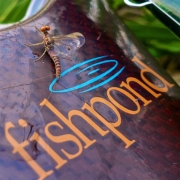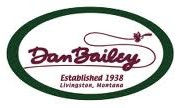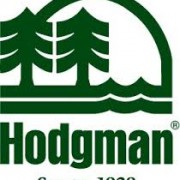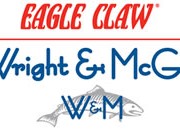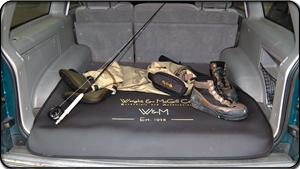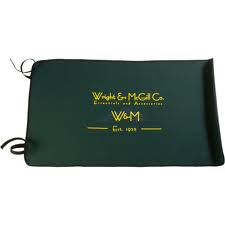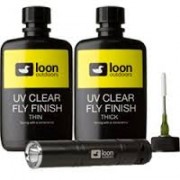We inventory a wide selection of waders.
The most important part of purchasing waders is ensuring that the the inseam is appropriate.
Please contact the shop for details and to discuss sizing and availability or first visit the Dan Bailey website here.
HISTORY
“Dan Bailey- In 1936 – Dan was a professor at Brooklyn Polytechnic Institute in New York City, and he was working on his doctorate in atomic science at NYU. He married Helen in 1936 and they drove to Montana for their honeymoon. Dan spent the summer camped on the Madison and Gallatin Rivers. Helen had to go back to New York City and work. Again they came back for the summer of 1937. Driving from Bozeman to Livingston Helen drove off the road, which was a winding mountain road. The car had to be towed to Livingston to be repaired and it took three days for the repairs. As Dan walked around Livingston he found a small space to rent on Park Street a block away from where we are located now. The cost was $20.00 a month. Dan found during the previous summer and the summer of 1937 he was unable to buy supplies for fly fishing and got the idea there was a need for a fly shop.
Back in New York he finished all his course work, exams and orals but never finished his thesis. He moved to Livingston in the summer of 1938. Helen came to Montana on vacations but did not move to Montana until 1940 or 1941. Had he stayed in New York City and finished his doctorate, he would have been in the middle of the Manhattan project.
His early years were very difficult but being a fly tier he sold flies to other outlets. As he told me in the early years most of the fishing supply outlets were bars. After his death in 1982, a customer sent me a copy of a classified add from a July 1937 Outdoor Life. “Send for free folder today. (Trial assortment, 5 for $1.00). Dan Bailey, 217 West 10th Street, New York City. After July First, send mail to Ennis, Montana. (The good old days) As you can see this was the start of our mail order business.
In 1946 John McDonald wrote an article in Fortune magazine about fly fishing and mentioned my father as “the crack Montanan, Dan Bailey”.
John McDonald was Dan’s best friend and lived in New York City. He and his wife came to Montana every summer for years and spent the summer with us. In 1954 John wrote another article in Volume 1, Number 1 of Sports Illustrated titled “Trout Fishermen, Go West” Again John mentioned Dan and showed a photo of the store.
Lee Wulff came and fished Armstrong’s Spring Creek in 1948. Joe Brooks started coming to Livingston in the early 50’s. By the 50s Dan had made
Livingston an international fly-fishing destination.
The April 3, 1958 issue of the Park County News, announced, “$85,000,000 Absaroka, Yankee Jim Dams Proposed by Sen. Murray. Yankee Jim Dam would have flooded parts of Yellowstone Park. The Absaroka dam became the known as the Allenspur Dam. In a 1959 piece in the Park County News, Dan wrote against the dam. “Recreation is one of the largest industries in Park County. Its value is less tangible then that of other industries which are easily measurable in terms of payroll or gross return. The two greatest threats to the fishing resource of the Yellowstone at pres- ent are: 1) the possibility of large water developments which could mean much more of a detriment than a benefit to recreation. 2) The possibility
of losing access to much of our best fishing water as fishing pressure increases.
He was one of the most vocal opponents to the dams. Having access to national publications helped get the information out. I remember all the
talk about the dam. I also remember all the talk after a meeting that took place in the local theater about the dam. This was the first time in my life
I became aware of the choices we face.
As we all know a project supported by a Senator is not easy to stop. It takes many people and a lot of time. One must also remember at this time
Anaconda Copper owned Lee Newspapers, which were most of the newspapers in Montana.
In 1901 John Muir led a large group of civic and conservation organizations in a campaign to protect the Hetch Hetchy Valley in Yosemite National Park. This campaign was unsuccessful. But it did show those opposed to the dams on the Yellowstone how to organize. Also listing the Yankee Jim Dam enlisted a lot of support from people who wanted National Parks left alone especially after losing in Yosemite.
The issue of the Allenspur Dam ran through the 50’s, 60’s and 70’s. Many people were involved on both sides. Dan always gave due to those who he thought had done more then he had done. He always knew it took a lot of people and support from many different groups to change the govern- ment.
During the early 60’s Dan helped with others to start Trout Unlimited in Montana. The founders from Michigan all fish in Montana every summer. Dan servred on the National Trout Unlimited Board for several years. He understood the importance of an organization to protect, conserve, and restore our resources.
The issue of Allenspur would pop up at odd times. However in the early 1970’s the idea became very valid again. This time the need for storage came from Coal Slurry pipelines. The North Central Power Study and the 1972 Montana/Wyoming Aqueduct Proposal showed how one third of the annual flow of the Yellowstone River would have to be diverted to meet the needs of a new massive power complex. To make this happen the Allenspur Dam would have to be built. Let’s not forget energy is again a national issue. Luckily now we had organizations like Trout Unlimited and others to help in this fight. I had just moved back in the fall of 1971 after finishing college and a stint in the army. I became very involved with TU and in a local group headed by Bob Anderson, who was also involved in the early 60’s with Allenspur Dam. These new studies galvanized Montanans as to how we could lose our quality of life and way of life. Most of Montana’s environmental laws were passed in the 70’s. As I look back at the 70’s, I realize how Dan allowed me to get involved in the many different issues facing our resources as he became the elder Statesman.
The Allenspur Dam idea became a hard sell after the Teton Dam failed on June 5, 1976. Teton Dam was an earthen built dam as Allenspur was to be
built. Also both dam sights have a major earthquake fault line running through the dam sight.
Another important issue Dan led was keeping Armstrong’s Spring Creek open to the public. During the 60’s Depuy’s Spring Creek was leased by a few individuals from the Denver area and no one else was allowed to fish it. The O’Hairs, owners of Armstrong Spring Creek, met Dan and said they would like to keep their spring creek open to the public. Dan enlisted the Yellowstone River Chapter (before Joe Brooks died) of TU to lease the Armstrong’s Spring Creek. Dan raised the money from different fishing companies. Eventually this concept did not work, but it set the founda- tion for fee fishing in effect today. The spring creeks could easily be unavailable to all of us now.
What I remember most about Dan was the advice he gave those who came to learn about the issues. His passion for the river flowed from his words.
He would tell them nothing will change unless you get involved. He would then tell them the many ways they could help.
After Dan died Helen died a month latter. The Joe Brooks Chapter of TU formed the Dan & Helen Bailey Memorial Fund. Norman McClain was
one of the earliest recipients. I would like to read a quote from his acceptance speech.
“The truth is I never met either Dan or Helen, but there have been times when I have thought that is one of the reasons why I was selected. If a man or woman lives after death only in the memory of those who were close to him then he will not have a very long or extensive afterlife. One’s friends are limited and mortal. But people like me who did not know the Baileys but admired them greatly and number in the hundreds of thousands are bigger and more durable then reality and make legends that will continue to remain long after us.””




